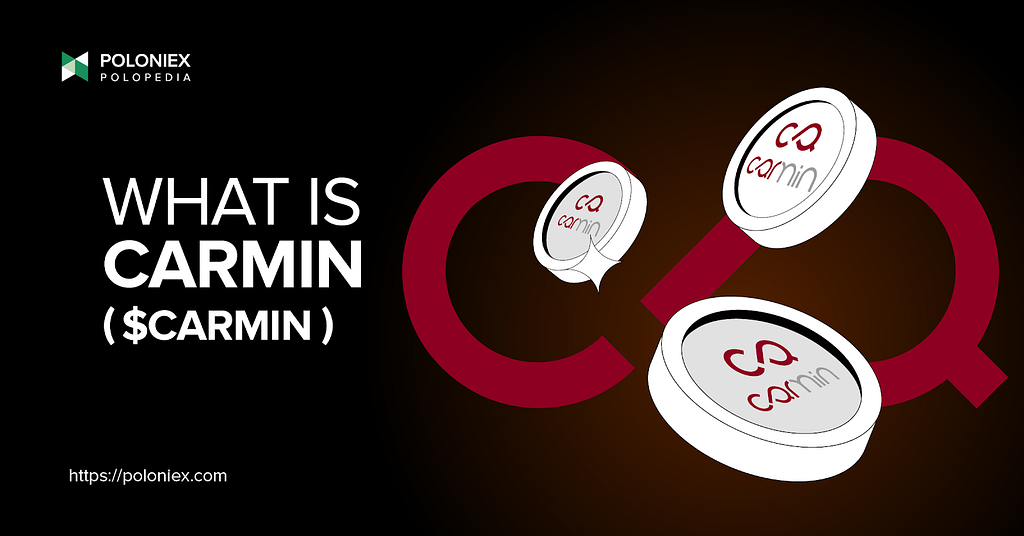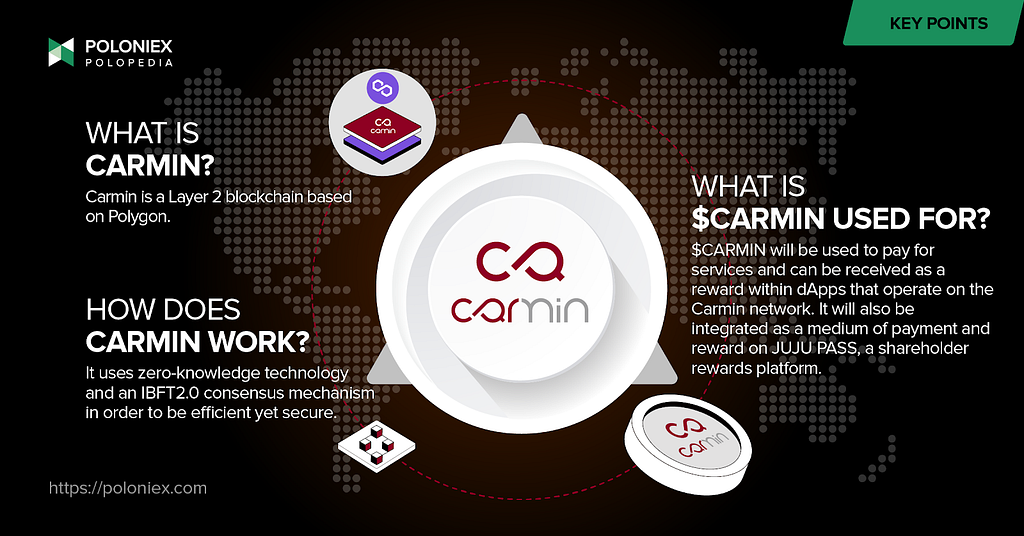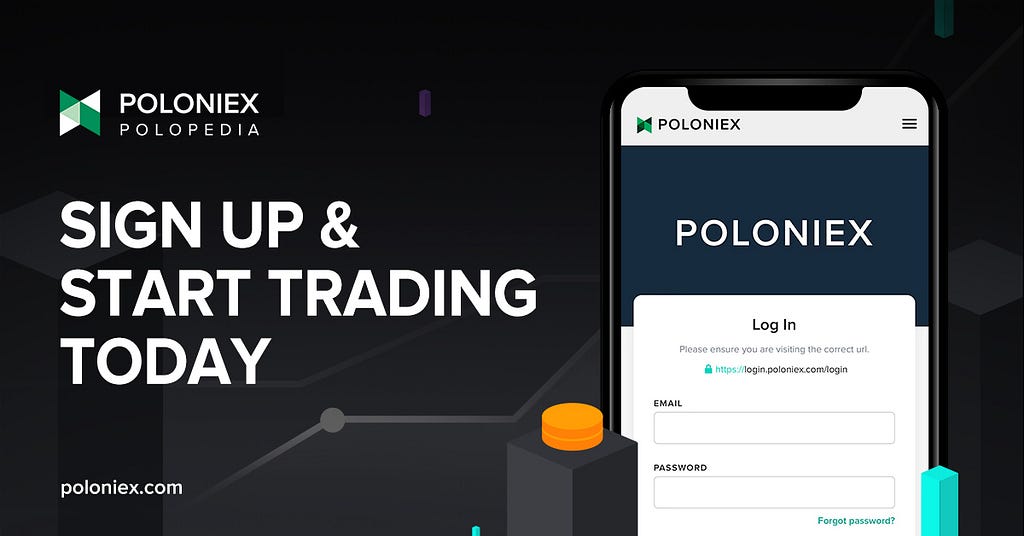Latest news about Bitcoin and all cryptocurrencies. Your daily crypto news habit.

Introduction
It is hard to overstate the importance of scalability, and scalability issues for that matter, in today’s Web3 landscape. Many otherwise powerful Layer 1 blockchains like Ethereum are burdened by high network stress due to their lower throughput. And solutions that have very high throughput may compromise their own security in the pursuit of speed. This conundrum creates quite the puzzle. A puzzle that you may have heard of by a different name: the “Blockchain Trilemma”.
This is where Layer 2 solutions come in. That is, the scalability answers to the woes of current blockchain network limitations. Now, there are different types of layer 2 solutions to the scalability issues in the form of sidechains or state channels. But by far the most popular solution is the rollup. Carmin is a Layer 2 blockchain that runs on Polygon and utilizes something called a zero-knowledge rollup.
The entity responsible for advancing Carmin’s technology and fostering its adoption is Carmin Labs, founded in Korea in 2022 by Stuart S. Lee and H. Peter Kim.
TL;DR
Carmin is a Polygon-based Layer 2 solution using zero-knowledge technology. It utilizes an IBFT2.0 consensus mechanism so that it is both secure and efficient.

How does Carmin work?
As aforementioned, Carmin is a Layer 2 that uses zero-knowledge technology to supercharge its transaction throughput. Its consensus mechanism is something called IBFT2.0. We will go over both the concept of zero-knowledge rollups and IBFT 2.0 in the next two sections.
Carmin is built on the Polygon network, meaning that it can process transactions faster and more efficiently than the Ethereum mainnet. This also helps Carmin “talk” to other Ethereum-based applications, as it is EVM-compatible. Currently, the blockchain has a global network throughput of 1,000TPS and a 1–5 second finality. It also employs the use of its own virtual machine, the CARMIN commit engine.
What are zk-rollups?
The Carmin mainnet uses a scaling solution called a zk-rollup, the ‘zk’ standing for ‘zero-knowledge. Zk-rollups are scaling solutions that aim to improve the scalability and efficiency of blockchain networks. You will often hear them mentioned as an answer to Ethereum’s scaling issues as they are commonly used to execute “batches” of transactions and then post that transaction data to the Ethereum mainnet for consensus. This solution is one of the two types of rollups, the other being optimistic rollups. With a zero-knowledge rollup, computation is run off-chain and proof of the transactions are handled by the rollup and then submitted along with their data to the mainnet. This, contrasted with an optimistic rollup, which assumes that transactions are, by default, valid.
In short, zk-rollups increase Ethereum’s throughput. By only posting minimal data to the Mainnet, some of the stress of executing and verifying every transaction is alleviated from Ethereum’s network.
Carmin’s consensus mechanism, IBFT 2.0
Carmin uses a consensus mechanism called IBFT2.0, the acronym standing for Istanbul Byzantine Fault Tolerant. Fault tolerance describes a network’s ability to withstand dishonest nodes. With IBFT, Carmin’s network can withstand a situation where 1 out of every 3 nodes is dishonest.
In terms of attributes, one can consider IBFT2.0 to live between a Proof of Work (PoW) and Naive Proof of Authority (PoA) consensus mechanism in that it provides a balance between security (PoW) and efficiency (PoA). IBFT 2.0 is where Carmin gets its quickness in finality.
Finality is the guarantee that a given transaction or transactions have been permanently added to a blockchain and cannot be changed, deleted, reversed, etc. So time to finality, which is one of the measures of a blockchain’s efficiency, tells us how long one would have to wait until the transaction is “final”. This is an especially important measure when talking about blockchain-based payment solutions.
This particular consensus mechanism also has the elegant security feature that is its requirement of a supermajority when reaching consensus on a proposed block. By requiring this, the likelihood of a malicious node being able to subvert the validation process is reduced.
The IBFT system’s process goes like this: A round-robin method (or other arbitrary method) is used to choose a leader node, who then proposes a block to add to the chain. The other nodes then verify the proposal, and if a supermajority agrees, the block is added to the chain.
This process is repeated for each new block, with a new leader node chosen for each round. This hedges against the possibility of a dishonest node gaining too much power or influence over the consensus process, and helps prevent attacks or malicious behavior. In this way, the Carmin network’s security is less likely to become compromised.
What is its token, $CARMIN?
$CARMIN is the native token of the Carmin blockchain. Adhering to principles of scarcity, this cryptocurrency has a cap at 2,000,000. It can be used to pay fees and be received as a reward within dApps that operate within the Carmin ecosystem. There are also plans to integrate it with other various partners as a medium of payment and reward.
Carmin’s future plans
Carmin plans to launch multiple products in the near future, including a decentralized exchange (DEX), NFT portal, and various decentralized applications (dApps).
Carmin’s DEX: Carmin Labs plans to launch a DEX that does away with reference prices, slippage fees and low liquidity. It also features an identification system very popular within dApps called a DID (Decentralized identifier). Furthermore, Carmin will also roll out its own APIs that other DEXs can plug into its platform.
Carmin’s NFT Portal, the ‘NFT MOA’: the NFT MOA, or NFT Museum of Art, will provide users with easy access to NFTs from other popular NFT platforms.
Carmin’s dApps: There are various dApps planned for launch on the Carmin blockchain, ranging from GameFi to metaverse apps.
How to acquire $CARMIN?
$CARMIN is available on multiple exchanges like Poloniex! You can acquire $CARMIN through trading a USDT/CARMIN trading pair.

Feeling ready to get started? Sign-up is easy! Just hop on over to https://poloniex.com/signup/ to start your crypto journey🚀
What is Carmin ($CARMIN)? was originally published in The Poloniex blog on Medium, where people are continuing the conversation by highlighting and responding to this story.
Disclaimer
The views and opinions expressed in this article are solely those of the authors and do not reflect the views of Bitcoin Insider. Every investment and trading move involves risk - this is especially true for cryptocurrencies given their volatility. We strongly advise our readers to conduct their own research when making a decision.